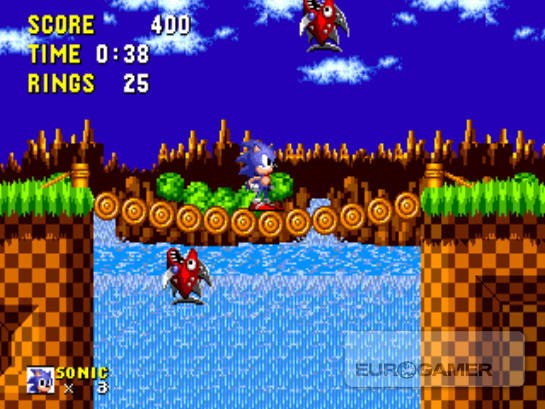Twenty years of the Mega Drive
To be this good took ages.
When the deal fell apart, SEGA decided to put its native distribution experience to use in America and marketed the Mega Drive itself. Rebranded Genesis, to avoid a naming conflict in the US, it beat the PC Engine (rebranded as the TurboGrafx-16) to the shelves by a matter of days in August of 1989. But Nintendo had a tight rein on its third parties, who buckled quickly under suggestions that developing for SEGA could cost them valuable NES licences. So SEGA only had its own coin-ops to fall back on when it wanted to show off the arcade quality of Mega Drive games.
Coin-op conversion Altered Beast was bundled with the console and it proved the point SEGA needed to make. It had to demonstrate the power of the Mega Drive without turning off young consumers with sterile talk about 16-bit processors and dedicated video drivers. The huge, detailed characters of Altered Beast provided this demonstration, and angled the Mega Drive for a unique market attack.
SEGA was pulling in its coin-op licences, which ran like a dream on the Drive, but there weren't enough to conquer the mountain of power Nintendo sat upon. So instead of turning to big name games, SEGA turned simply to big names. With EA's help the Mega Drive launched a series of big-money, big-name licensed sports titles across America. The Japanese parent company balked at the decision to pay millions in royalties to sports personalities such as Joe Montana, Arnold Palmer and Buster Douglas. But it paid off in droves, and not only for SEGA.

Third-party developers were shackled by an oppressive licensing system required to make games for the NES. Nintendo held all the keys and there was no real alternative for reaching gamers. It was a case of pay, or they can't play. At least until the Mega Drive came along. Considering the early experience it gained working on the sports games, Electronic Arts decided it was going to create its own, unlicensed Mega Drive games before SEGA had time to put any security restrictions into the US console, but out of courtesy it first approached the new hardware distributor and laid its plans out in the open.
SEGA astonished EA with a far more reasonable and open licensing agreement that allowed third parties to develop as many games as they wanted and to operate their own quality control procedures. Players had seen the arcade quality games the Mega Drive was capable of, but it was a particularly fulfilling dream for third-party developers. In retrospect, getting the game designers who'd been systematically abused by Nintendo for several years onside was the crowbar SEGA needed to prise open the games market.

The install base was small, but the freedom to create was huge, and that's all the game developers needed. The Mega Drive was a massively superior machine to the NES in technical terms, but now it was also superior financially. And this coup against the industry regime spread beyond the Mega Drive; thanks to SEGA's new presence in one small corner of the market, Nintendo's totalitarian policies would no longer sustain themselves as the new generation of games systems cautiously moved in.
There's a strong temptation at this point to pour praise and salutation upon Sonic the Hedgehog. Indeed he was a powerful force behind the Mega Drive as well as starring in one of the finest games ever made, but in truth his arrival in 1991 was the culmination of well-played marketing strategies on behalf of SEGA of America. Sonic was a twist in the tale, brought in at the end of a struggle that saw SEGA wrestle dominance from Nintendo and share it out across the games industry. To gamers the Mega Drive was a great new machine that brought as much credibility into their living rooms as it did arcade quality games, but to the games industry it was a freedom fighter, and an engine of revolution.